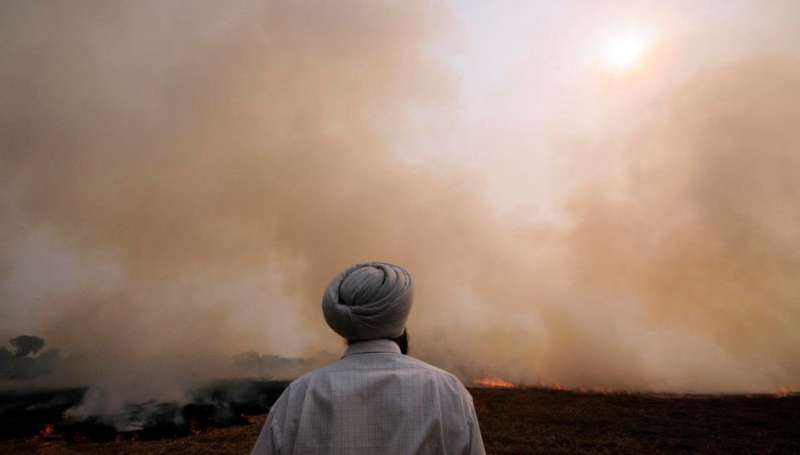Crop waste cattle feed solution 'averts toxic fires'

Researchers in India have found a way to enhance the nutritional value of crop residue so that it can be fed to cattle, deterring farmers from setting it on fire, a practice that destroys soil nutrients and causes severe environmental pollution.
Farmers, particularly in northern Punjab and Haryana states, set rice and wheat stubble ablaze after harvesting, as a cheap way to clean up and fertilize fields before planting winter crops, according to a NASA report. But this results in a sharp deterioration in air quality in the capital of Delhi as well as the densely populated Indo-Gangetic Plain.
The new method, according to a study published December in Current Science, involves controlled spraying of urea onto straw residue during baling. After a curing period, the product showed enhanced palatability, digestibility and nutrient uptake, resulting in improved animal growth and milk production.
Urea is a naturally occurring chemical consisting of nitrogen, carbon, and oxygen, which has important uses as a fertilizer and as a feed supplement.
According to Satya Prakash Kumar, an author of the study and scientist at the Central Institute of Agricultural Engineering, in Bhopal, the effectiveness of the system depends on factors like the type of straw, urea concentration, moisture level, compaction, storage and environmental factors.
"A mechanized baler equipped with a urea spraying system was found to increase crude protein in wheat straw from 3.68% to 10.10% after treatment while energy was found to improve by 3% compared to untreated straw," Kumar tells SciDev.Net.
The urea spraying system, mounted on the mechanical baler, uses a series of flat nozzles to evenly discharge urea solution on the loose straw.
Individual urea-treated bales of straw are tightly wrapped in polyethylene sheet, stacked and stored in shade at room temperature for a curing period of 21 days.
"Crop residue, being unpalatable and low in digestibility, cannot form the sole feed for livestock," says Dilip Jat, co-author of the study. "Rice straw is a poor cattle feed due to high silica content and wheat straw is not preferred by animals as the stem is hard and difficult to chew."
Between 2003 and 2016 there was a massive increase in crop residue burning in the western Indo-Gangetic plain with some areas seeing more than 100% rise according to observations of active fires and burned areas, while data gleaned from satellite and ground-based monitors showed increases in smoke plumes from agricultural fires, the study said.
A study published in Nature Communications in November says that crop residue burning contributes to poor air quality and imposes a health burden on India. "Despite government bans and other interventions, the practice remains widespread," the researchers say, adding that between 2003 and 2019, the practice caused 44,000–98,000 premature deaths per year related to particulate matter exposure.
K. Sahadevan, a well-known environmentalist and member of the South Asian People's Action on Climate Change, a regional coalition of individuals and organizations, says that burning of crop residues causes environmental pollution, human health issues, greenhouse gases emission and loss of nutrients.
"Non-availability of labor, high cost of residue removal from the field and increasing use of combines in harvesting the crops are the main reasons for burning crop residues in the fields," Sahadevan tells SciDev.Net.
More information: Satya Prakash Kumar et al, Mechanized urea spraying system for balers to enhance the nutritional quality of straw: a step to prevent straw burning, Current Science (2022). DOI: 10.18520/cs/v123/i11/1381-1386 www.currentscience.ac.in/Volumes/123/11/1381.pdf
Journal information: Nature Communications
Provided by SciDev.Net





















